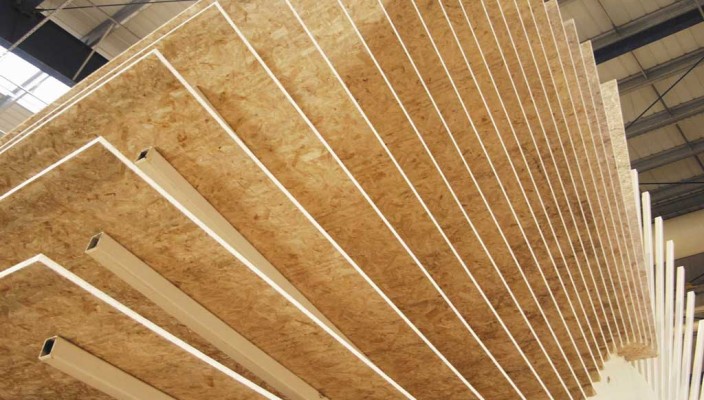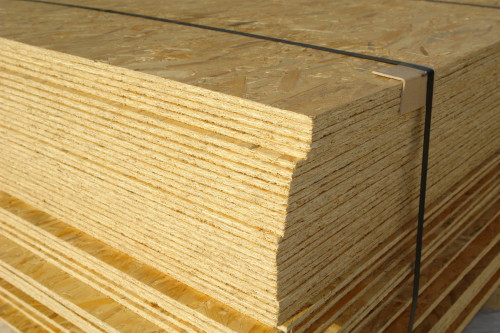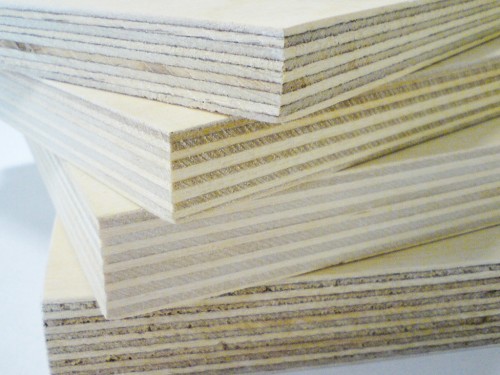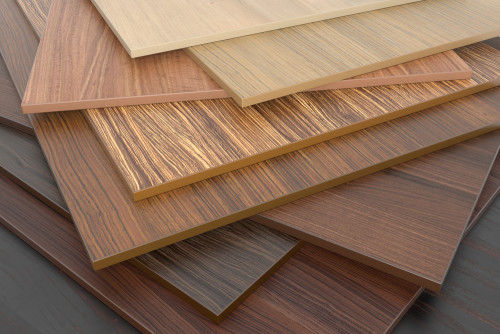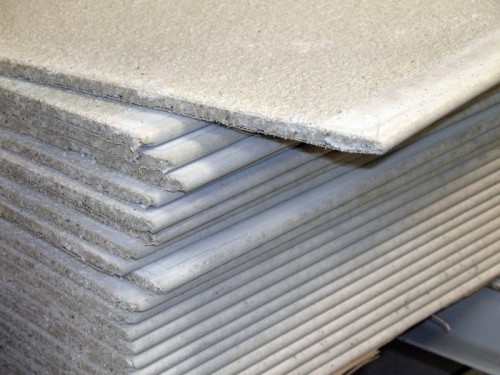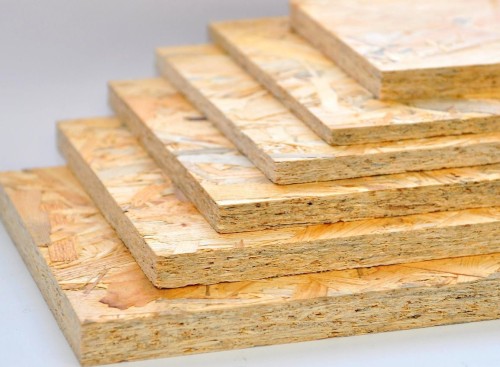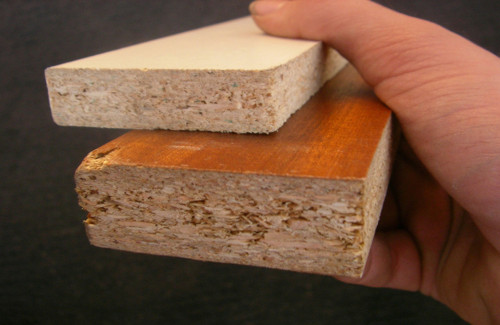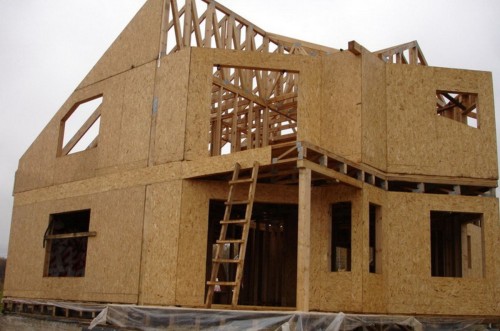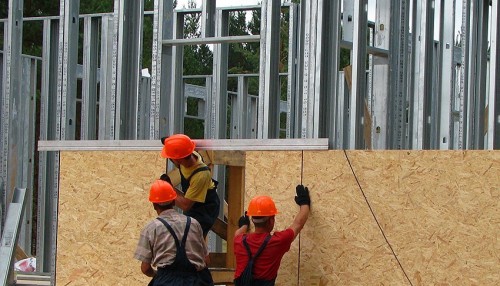In construction, as in repair work, wood plates are often used. There are quite a lot of species of such plates, all of them are manufactured on various technologies and have certain characteristics. In this article, we will consider in detail the various types of wood stoves, we will tell about their features and spheres of application.
Content
What is a wood stove
Natural wood is the main raw material for the production of such material, in connection with which the plates have all the positive qualities inherent in it. For example, like the tree itself, the plates have good thermal insulation properties and differ in high ecology. In the process of manufacture, special components are added to them that help minimize disadvantages inherent in natural wood.
It is known that the tree refers to flammable materials, in addition, it perfectly absorbs water, rotates under the action of high humidity, deformed and cracks over time from frequent wetting and drying. Wood is also an attractive material for various parasites and bugs that feed on its fibers and destroy the structure. Wood plates are beneficial from the natural analogue, since they have substances designed to eliminate such drawbacks or reduce their degree of manifestation.
The advantage of the stove is and what they are produced in various formats and are more simple in the work than logs and boards. It is impossible not to take into account the price of such a material, because it is significantly lower than the cost of natural wood.
Types of wood plates
Plywood
Plywood is a building and finishing material that has a sheet format and is made by connecting thin layers of a wooden veneer. The sheets of veneer are glued in such a way that the fiber of each subsequent layer was perpendicular to the fibers of the previous one. The number of layers of veneer ranges from 3 to 23 than the thickness and strength of plywood is due. In addition, the plywood is divided into 2 types: the sameness and not loss. In the first case, all layers of material have the same thickness, in the second - the middle layers are somewhat thicker than external.
The technology of manufacturing wood plates of this type is different, depending on this distinguish between several species phanel:
- The plywood is produced by cutting thin wood layers from a rotating log.
- The sawn plywood is made by sawing the tree to thin stripes, the thickness of which does not exceed 5 mm.
- The planed plywood is made of planed layers, the thickness of which is 3.5 mm.
Such material is also classified by the type of raw materials used. Depending on the type of wood that is part of the sheets, Phaneur is divided into such types:
- Determined material - it is made from the hardwood of trees, for example, from maple, alder, poplar, aspen or birch. Birch is considered the most popular raw material because it is quite strong and has an attractive texture. The Phaneur of this type is used as a finishing material, to create furniture and vehicles, as well as in construction.
- Coniferous plywood is made from conifers: pines, fir, larch and Siberian cedar. The last two types of wood are most often used for the production of decorative plywood designed to decorate the premises. Since the initial raw material in this case has a high resin content, the material is solid and moisture-resistant.
- Combined plywood has the raw materials of the two types above. Its distinctive features are strength and moisture resistance. The scope of use of the material is quite wide, but it is most often used for the manufacture of furniture.
In addition to the above features, Faneru also classifies on stamps:
- FSF - this abbreviation is denoted by Paneur with elevated moisture-repellent characteristics. Its component composition includes phenol formaldehyde resins - they make the material with waterproof, and also protect it from fungi and mold. Due to the resistance to high humidity, such a fane can be used in the outer finish.
- FC is a plywood with average moisture resistance. The layers of such a material are connected with the help of carbamide glue. This substance makes the Paneur durable, but does not give it the properties of waterproof. In addition, the plywood of this brand does not tolerate temperature fluctuations and is not stable before developing mold. Such sheets are not suitable for outdoor work, but are widely used in interior decoration, as well as in furniture production.
- Bakelite plywood is indicated by the abbreviation of the FB. This material is produced by gluing the veneer sheets with bakelite varnishes and synthetic resins. The final product is obtained moisture-resistant, refractory, wear-resistant and very durable. Plywood of this type is well tolerates temperature fluctuations and a long-term impact of moisture, which makes it possible to use it in the outer decoration, as well as in the field of ship and automotive industry.
- The FBA is plywood, the layers of which are connected with each other with the help of albuminazeine glue. This glue has a natural origin, so the material is cleaned environmentally friendly. But the plywood of this type does not have high moisture resistance, so it is used only for internal works or in the manufacture of furniture.
- The Aviation Plywood of the BS brand is produced by gluing veneer sheets by bakelite alcoholoisseable glue. This glue makes Paneur unusually durable and waterproof. The positive qualities of such a material also include its flexibility and elasticity, biological resistance, the ability to withstand the effect of aggressive chemicals. Plywood of this type is used in shipbuilding and aircraft. Due to the high price, the material is rarely used in the construction of buildings.
- BV is a plywood whose layers are glued with water-soluble bakelite glue. In terms of its characteristics, it is almost no different from the previous version, but is inferior to aviation plywood degree of its moisture resistance.
- Laminated plywood has a special coating on both sides, characterized by increased strength and decorativeness. Such a coating is resistant to physical influences, it is well tolerating moisture and direct contact with water, prevents the destruction of the inner layers of plywood. Most often, such material is used for decorative interior decoration or for the manufacture of furniture.
As you can see, different types of plywood have their own distinctive properties and have a certain scope of application. But all these species can be combined with general positive qualities:
- All plywood is characterized by high strength and wear resistance. This feature is due to the structure of the material, namely the fact that different layers of veneer have perpendicular location of the fibers.
- Plywood is easy to work, her sheets easily cut into fragments, and low weight facilitates the installation process.
- The cost of plywood is relatively small, much lower than solid wood. And the reason is that wood-made waste is often used for the manufacture of material.
- Phaneur can be bend, thanks to which she gives different forms. This allows you to make original curly furniture and other interesting details.
- Such material has excellent thermal insulation.
Along with the advantages, Plywood has certain disadvantages:
- Many brands of this material poorly carry the prolonged impact of moisture and water.
- In the production of plywood, especially high strength and moisture resistant, substances with a certain degree of toxicity are used.
Wood-chip
The chipboard is a combination of sawdust and a binder component, which are connected between themselves under the action of high temperature and are pressed into the stove. These plates are subsequently cut into separate sheets. As a rule, the binding component is urea formaldehyde or phenol formaldehyde resins. Due to the fact that the components of the material are securely and firmly connected together, chipboard plates are of different thicknesses, while the density and uniformity of the finished product does not suffer.
Wood-chip clades are classified according to different signs:
- Depending on the appearance of the material, it is divided into two varieties, there are also plates that do not have varieties at all. The first grade is characterized by the highest quality: a homogeneous structure, beautiful texture, lack of defects. The second grade has several worse characteristics, and the chipboard without a variety is considered the lowest material.
- Depending on the number of layers, the chipboard is divided into single-layer, two-layer and multilayer plates.
- The chipboard is also classified by the type of surface treatment. So, the material of ground and unwanted types is distinguished, in addition, there is a separate type - laminated wood chipboard. The sides of such a material are covered with a melamine film that is glued to high pressure plates. Mixed chopped chipboard, the external coating of which is characterized by high decorativeness.
- Depending on the amount of formaldehyde, the chipboard is two classes. The E1 class contains no more than 10 mg of formaldehyde per 100 g of sawdust. The E2 class contains from 10 to 30 mg of a substance per 100 g of dry sawdust.
- The chipboard is classified according to the criteria of strength, water resistance, hardness. There are 2 types of plates in total: P - A and P-b. The first option has higher indicators in comparison with the second.
- The process of producing such material can also be different. Pressing technology is flat or extrusion types.
- Depending on the density of the chipboard, there are 3 species. Low density plates have an indicator of 550 kg / m 3, at the Middle Density Chipboard, this value ranges from 550 to 570 kg / m 3, and high density plates have an indicator greater than 750 kg / m 3.
- The texture of the surface in chipboard also varies. Depending on this indicator, coarse and fine-grained plates are isolated.
General Positive qualities of chipboard can be represented as a list:
- Such material has higher strength characteristics, if you compare it with ordinary wood.
- Wood-chip stoves are distinguished by moisture resistance, since they contain a large amount of artificial resins.
- The price of the chipboard is significantly lower than that of natural wood.
- The process of working with the material does not represent difficulties.
Like any other building material, chipboard has a number of shortcomings. The most significant of them is the presence of a toxic formaldehyde material. In addition, such plates have fragility and cannot be used in the manufacture of small parts. Self-tapping screws and screws in DSP plates over time are loosened, and it is no longer possible to re-spin them in the same place.
Wood-chip stoves are used in various fields: in the interior decoration, in the arrangement of roofs, walls and floors of buildings, in furniture production, in the creation of warehouse racks and various collapsible structures.
Cement-chipboard
Another type of wood stove is a cement-chip material. It is large-format sheets made by mixing wood sawdust, portland cement and various chemical additives. The components of the larger fraction are located in the central part of the plates, smaller particles are located outside. Thanks to this structure, the material is obtained not only durable, but also smooth.
Cement-chip plates are several types:
- Fibrololite is a material produced from long-filling wood chips. The density of such plates is small and is approximately 300-500 kg / m 3The thickness reaches from 3 to 15 cm. Fibrololite has soft and low weight, the main scope of its use is the insulation of walls and overlaps, filling the frame structures. Plates of this type are very simple in operation, and also have good stability in front of various microorganisms.
- Arbolit is made of small wood sawdust and has greater density than its aforementioned analog. Like fibrololite, the arbolit has good thermal insulation qualities, due to which it is used as a heater for the walls. The material is also used to create panels, wall blocks and reinforced floors.
- Xylitolitis is a combination of such components as woody sawdust, concrete and magnesian binder. Depending on the production technology, xylitolitis is cast and slab. The distinctive properties of such material are high strength, resistance to mechanical damage, good shockproof qualities. In the process of manufacture, xylolite can be stained in the desired shades by adding special powder pigments. Most often, such material is used to arrange the floor, because in its strength it is not inferior to concrete, but it has much better thermal insulation characteristics.
The positive properties of cement-chip plates include such qualities:
- good strength characteristics that are achieved by a multilayer material structure;
- relatively low price, especially in comparison with the cost of natural wood;
- resistance to water, fire, low temperatures;
- environmental friendliness and safety;
- excellent sound insulation qualities;
- high biological stability due to which the material is reliably protected from insect attacks and harmful microorganisms;
- ease of work;
- durability - the average service life of cement-chipboard is at least 50 years;
- the possibility of finishing the plates with practically any facing materials.
The disadvantages of cement-chipboard are not so much. These include a large weight, which makes the installation process more complex, as well as a small bending strength, because of which the plates can break with incorrect circulation.
Oriented chipboard
On the modern construction market OSB plates have become a rather popular product intended for external and internal construction work. OSB plates are created by mixing chopped wood with waterproof artificial resins. The chips is pressed with a binder in high temperature conditions. The final product is a durable multilayer material, the individual layers of which have a different direction of fibers. OSB plates are several types:
- OSB-1 is the cheapest and least durable material that is not characterized by increased moisture resistance. Such slabs are most often used in furniture production or in the interior decoration of rooms. For external work, this material is not suitable.
- OSB-2 is also not considered moisture-resistant, but it has higher strength characteristics than the previous view. Plates of this type are used to create overlaps, partitions, carrying structures. For external finishing, such material is also not applied.
- Moisture-resistant OSB-3 Wood Plates can be used in the outer decoration, since along with water-repellent properties, they also have good strength.
- OSB-4 plates are considered the most durable and durable. They are absolutely not exposed to high humidity, so they can often be found in the structures of roofs, walls and carrier elements.
A separate type of material is presented by laminated oriented chipboards that are convenient to use to create multiple application formwork. And the plates equipped with the end sides by the ridge-comb system are used as a finishing material.
The positive properties of oriented chipboard can be attributed:
- Good strength characteristics, because in the process of producing material, wood layers are superimposed on each other in such a way that the fibers have different directions.
- Durability. The service life of OSB plates is at least 50 years.
- Relative ease of work. OSB sheets easily cut into parts, and low weight facilitates their installation. Among other things, the structure of the material is quite durable, so it does not form chips and cracks during pickle and drumsion.
- Acceptable value.
- High heat saving and soundproofing qualities. Oriented marriage walls for walls will provide comfort and comfort in the room.
- Resistance to the action of moisture and fungi.
- A convenient format due to which the finished surface will have a minimum of joints.
Eating oriented chips and disadvantages can be attributed to them:
- Toxic substances that are one of the material components. If the plates are supposed to be used in the interior, when buying should pay attention to their ecological class.
- Flavoring is another lack of OSB plates.
- Such material requires additional insulation, as it is inclined to absorb water, swell and deform.
Warring plates
Plates of this type are made of wood or other vegetable fibers that glued with artificial resins. The component composition of the material also includes various additives and fillers. There are 2 ways to produce fiberboard plates. The first method is called dry and involves the use of synthetic resin. With a wet method, the chemical binders are not added to the material.
There are 4 main types of tree fiber plates:
- Superhards are plates whose density exceeds 1100 kg / m 3. Such material has high strength rates and can be used to create outdoor structures and furniture parts, as well as for floor finishing. This type of fiberboard, in turn, is divided into 2 varieties: the plates of Art and St-C. The first option has high strength, but does not differ decorative. The second variety has a refined external side.
- Solid slabs DVP have a density of about 850 kg / m 3. This material is also characterized by high strength and can be used both in the interior and in the creation of outdoor structures, for example, balcony doors. Solid cookers of DVP have several brands that differ in their appearance. Among them, they allocate both the cheated types of material and more decorative, the outer side of which consists of a fine mass and is painted in various shades. The surface of the Fiberboard may be matte and glossy. In the first case, the plates are stained with polyvinyl acetate water emulsion compositions, in the second - enamels with the content of artificial resins. There are also plates with a decorative texture imitating various surfaces. Such texture is achieved due to special paper covered with a synthetic film.
- Semi-solid Fiberboard plates are also called MDF plates. Such material is characterized by higher ecology than its analogues. The positive qualities of MDF include moisture resistance, as well as resistance to fire and damage to microorganisms. MDF has sufficiently high strength and is used in the production of furniture, in the decoration of walls and floors of the room. The structure in such plates is solid and homogeneous, so the material can be treated with all sorts of ways, without fearing the appearance of cracks and chips.
- Soft wood fiber plates are not used in the outer finish, because they do not have sufficient strength and moisture resistance. This material found its application in the interior decoration of the premises, where it performs decorative and heat-insulating functions.
Wood slabs, photo:

